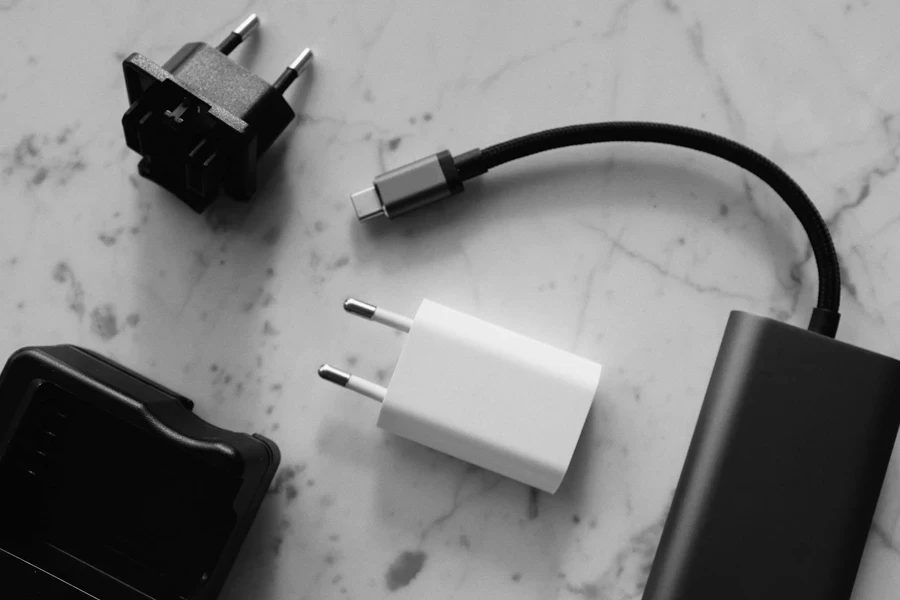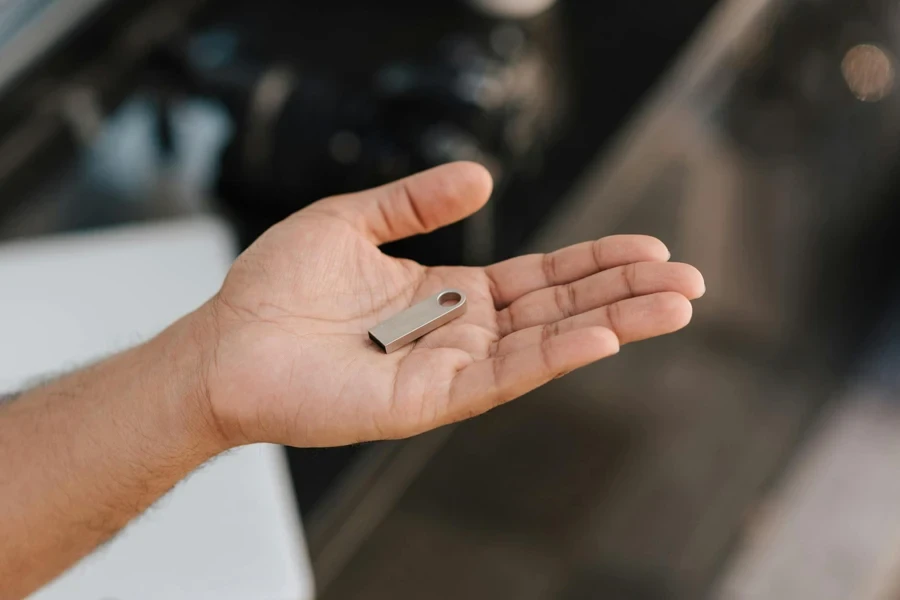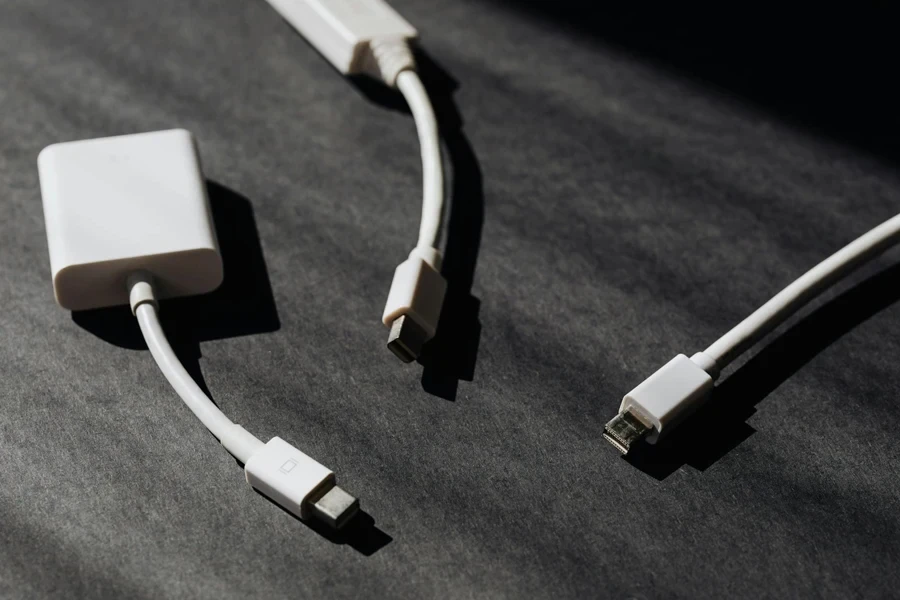Table of Contents
● Introduction
● Market overview
● Key technology and design innovations
● Top-selling models driving market trends
● Conclusion
Introduction
USB gadgets have become increasingly indispensable in both professional and personal environments, driven by their versatility and the expanding demand for connectivity solutions. As workplaces evolve and home offices become more common, the need for efficient, multifunctional devices has surged. These gadgets, ranging from USB hubs that expand connectivity to innovative USB-powered tools, cater to a diverse set of needs, promoting efficiency and convenience. The rise in mobile workstations and digital nomad lifestyles has further cemented the role of USB gadgets as essential tools for modern life. Consequently, their market presence has grown, reflecting their critical role in enhancing productivity and connectivity across various settings.

Market overview
The USB gadgets market is set for significant expansion, projected to increase from USD 26,749 million in 2022 to USD 62,048 million by 2031, with a Compound Annual Growth Rate (CAGR) of 9.8%, as per Tech Market Experts. This robust growth is fueled by the widespread adoption of USB technology across multiple sectors such as consumer electronics, IT, healthcare, and automotive. The versatility of USB gadgets in facilitating not only data transfer but also power supply has made them indispensable in modern technological ecosystems. As the demand for more efficient and multi-functional devices grows, USB technology continues to evolve, offering greater integration and connectivity solutions that enhance both productivity and user experience.
In more detail, USB 3.0, noted for its high-speed data transfer capabilities and backward compatibility, is dominant in the market, facilitating faster and more reliable connections that appeal to both consumer and industrial users. The emergence of USB Type-C has further revolutionized the market, delivering a reversible interface that supports high-speed data and power over a single connection, dramatically simplifying user interactions with technology. According to market analysis, these advancements in USB technology are significant contributors to the projected market growth, with the USB devices market expected to achieve a steady CAGR of 9.8% through 2031. This trend highlights the crucial role of continuous innovation in USB technology in driving the market forward, responding to the evolving needs of a tech-savvy consumer base and the ongoing digital transformation in various industries.
Key technology and design innovations
USB-C advancements
Recent technological advancements in USB gadgetry have centered significantly around the adoption and refinement of USB-C technology. USB-C has quickly become the standard for new electronic devices due to its reversible plug feature, which eliminates the common frustration of plug orientation, making device connections quicker and more user-friendly. USB-C supports not only higher data transfer rates but also increased power flow compared to older USB standards like USB-A. This capability is especially beneficial in tech-intensive environments where quick data handling and efficient charging are crucial. The versatility of USB-C allows it to serve multiple roles, including data transfer, charging, and as a video output, making it an all-encompassing solution for modern tech needs.

Design innovations in USB hubs
Innovative design changes in USB hubs have significantly enhanced their functionality and user experience. Contemporary USB hubs are now designed to incorporate various connections—HDMI for video, Ethernet for networking, and power inputs—all within a single compact unit. As highlighted by USB Memory Direct, these hubs focus on enhancing user accessibility while minimizing workspace clutter. They effectively reduce the necessity for multiple adapters and cables, streamlining setups in professional and home office environments. This integration supports a cleaner, more organized workspace, which is vital for maintaining productivity and reducing setup time.
Material improvements for durability
The advancement in materials and components has markedly improved the durability and performance of USB gadgets. Innovations in materials science have facilitated the production of smaller, more robust USB devices capable of withstanding harsh conditions. This durability is crucial for devices used outdoors or in industrial settings, where traditional electronics might fail. These materials ensure that USB gadgets are resistant to physical shocks, extreme temperatures, and moisture, thus maintaining their performance integrity under stressful conditions. Enhanced durability not only extends the lifecycle of these devices but also ensures reliability in critical applications.
Enhanced performance standards
The evolution of USB technology continually focuses on improving the performance standards of devices. The adoption of USB 3.0 and USB-C in new models significantly enhances data transfer speeds, which is essential for handling large files or streaming high-definition content efficiently. These performance enhancements are critical not only in terms of speed but also for energy efficiency, enabling devices to charge faster and retain power longer. This shift is pivotal for tech users who rely on fast, efficient, and uninterrupted connectivity for their daily operations, ensuring that productivity is maintained with fewer disruptions.
Consumer and professional demand driving innovation
The ongoing advancements in USB technology are driven by a deep understanding of both consumer and professional demands, propelling the development of gadgets that are efficient, versatile, and adaptable to various digital workflows. This includes capabilities ranging from straightforward data transfer to comprehensive digital hubs that support a multitude of functionalities. As digital demands evolve, the need for highly functional, durable, and efficient USB gadgets continues to influence their technological and design development. This ensures that USB devices remain an integral component of both personal and professional digital ecosystems, adapting to the changing landscapes of technology use.

Top-selling models driving market trends
Market impact of high-performing USB models
The USB gadgets market is markedly shaped by high-performing models that have recorded significant sales and strongly influenced current market trends. These models typically feature advanced connectivity technologies such as USB 3.0 and USB-C, which are essential for supporting high-speed data transfer and efficient power management. Such capabilities are increasingly important in today’s fast-paced technology environment, where consumers expect quick charging and rapid data synchronization across multiple devices. The popularity of these USB models is further enhanced by their compact and ergonomic designs, which not only provide the convenience of portability but also appeal to aesthetic sensibilities of a diverse consumer base. This blend of functionality and style has made these gadgets particularly popular, setting new standards in the USB market and pushing competitors to innovate continually to maintain relevance and market share.
Technological innovations in USB models
Top-selling USB models stand out due to their incorporation of cutting-edge technologies that offer enhanced connectivity and user-friendly features. These devices often include multiple ports that support not just USB connections but also HDMI and Ethernet, providing all-in-one solutions that appeal to both general consumers and professional users. According to insights from industry leaders, these multifunctional USB hubs are designed to facilitate a seamless interaction with various digital platforms and devices, enhancing user productivity and satisfaction. The ability to connect multiple devices through a single hub reduces clutter and simplifies the setup process, which is particularly valuable in compact workspaces. Furthermore, the integration of fast-charging capabilities alongside high-speed data transfer options in these USB hubs meets the growing demands for more efficient tech solutions, driving their popularity and setting high standards for future products in this category.

Consumer preferences driving USB design
The design and development of new USB gadgets are increasingly driven by consumer preferences, which favor a combination of high functionality and sophisticated design. Today’s consumers are looking for gadgets that not only meet their technical demands but also resonate with their personal style and aesthetic preferences. This trend has encouraged manufacturers to focus on creating products that are not only robust and high-performing but also sleek and modern. These efforts are evident in the latest USB gadgets that feature durable materials for longevity, ergonomic designs for comfort, and stylish appearances that make them attractive additions to both personal and professional environments. The emphasis on creating products that align with these consumer preferences ensures that manufacturers can attract a broader audience, encouraging more widespread adoption and loyalty among users.
Durability and style in USB gadgets
In response to consumer demand, today’s USB gadgets are increasingly designed to offer durability and style, ensuring they withstand the rigors of daily use while remaining visually appealing. Manufacturers are utilizing advanced, resilient materials that can endure various environmental conditions without compromising functionality. These materials include water-resistant coatings and reinforced casings that protect the internal components of USB devices from physical damage and environmental factors. At the same time, designers are focusing on sleek, minimalist designs that appeal to modern aesthetics, integrating smoothly with other tech gadgets and office decors. This dual focus on durability and style caters to the needs of a diverse user base, from outdoor enthusiasts and travelers to office workers and tech aficionados, making these gadgets suitable for a wide range of settings and uses.
Future directions in USB technology
As consumer electronics continue to evolve, the future of USB technology looks geared towards further integration and innovation to meet the complex demands of modern users. Manufacturers are challenged to continually advance the capabilities of USB gadgets to handle higher data volumes, faster charging rates, and greater connectivity needs. The ongoing trend towards devices that seamlessly integrate multiple functions into single units is expected to persist, driven by consumer desire for efficiency and simplicity in their technology use. Innovations are likely to focus on enhancing data transfer speeds further, expanding compatibility across a broader range of devices, and improving the ecological footprint of these products. The future developments in USB technology will need to balance performance with sustainability and convenience, ensuring that these gadgets remain indispensable tools in our digital lives while adapting to the global shifts towards environmental consciousness and technological convergence.
Conclusion
The market overview and analysis of USB gadgets reveal a robust sector driven by rapid advancements in technology and a strong consumer demand for high-performance, multi-functional devices. USB 3.0 and USB-C have become particularly significant, offering high-speed data transfers and enhanced power management which cater to the modern consumer’s need for efficiency and connectivity. The introduction of USB hubs with multiple port options not only streamlines user experience but also minimizes desktop clutter, reflecting a trend towards more integrated digital environments. These technological innovations not only meet current consumer demands but also set the stage for future developments.
Looking forward, the evolution of USB gadgets is expected to continue along the path of increasing integration and user-focused innovation. Future developments may include further enhancements in data transfer speeds, energy efficiency, and perhaps even greater universality in connectivity to accommodate the expanding IoT landscape. Moreover, as consumers increasingly value both functionality and design, future USB devices will likely continue to evolve in aesthetics and durability, potentially incorporating environmentally friendly materials and more sophisticated, user-friendly designs to align with global sustainability trends.




